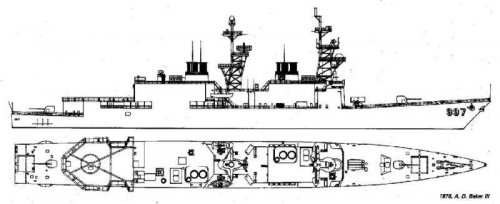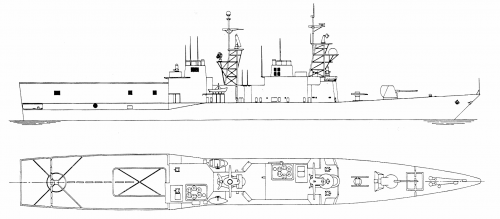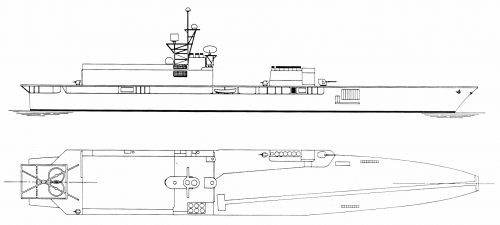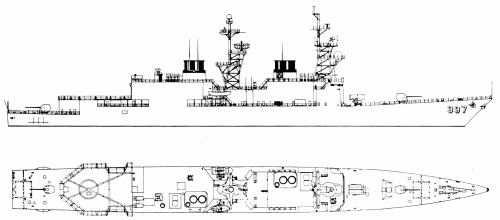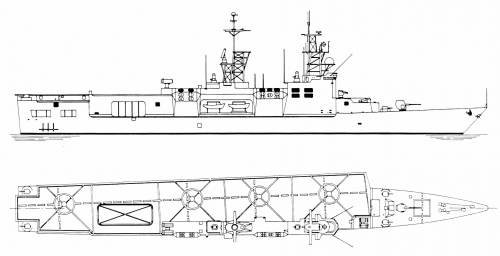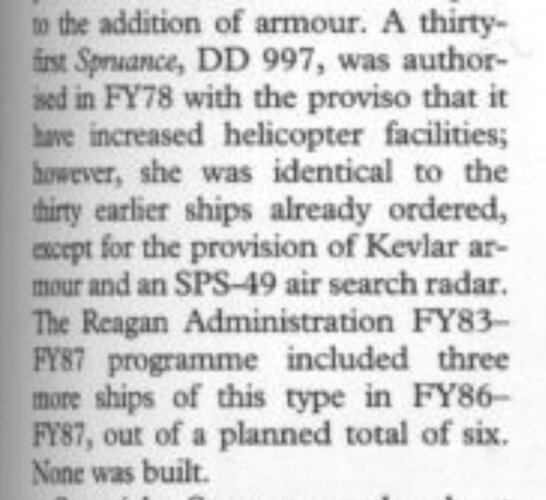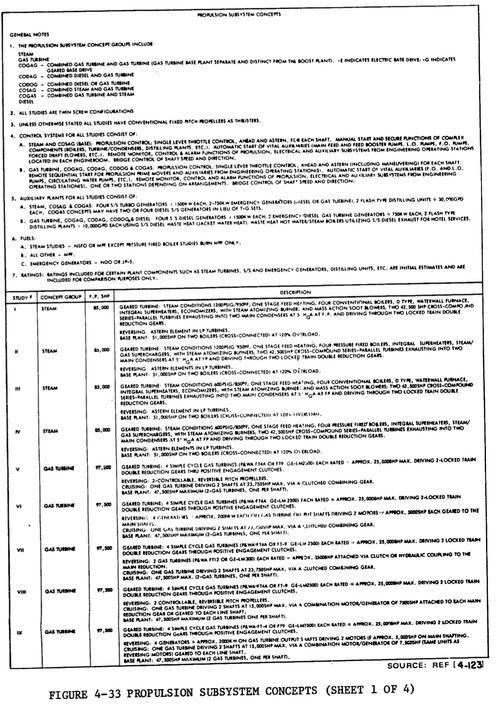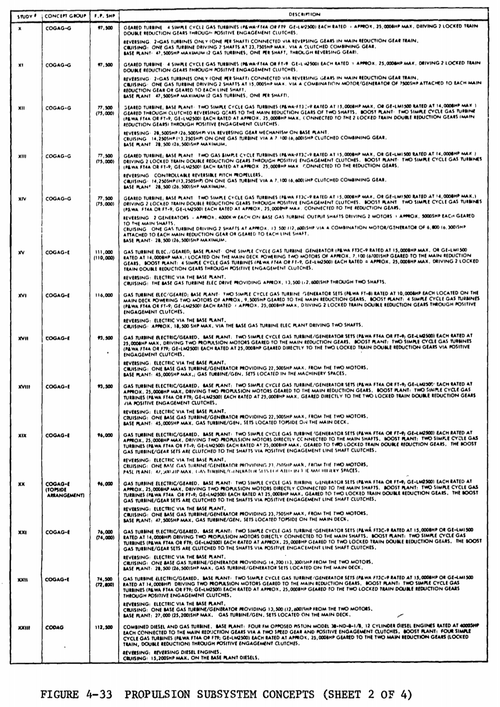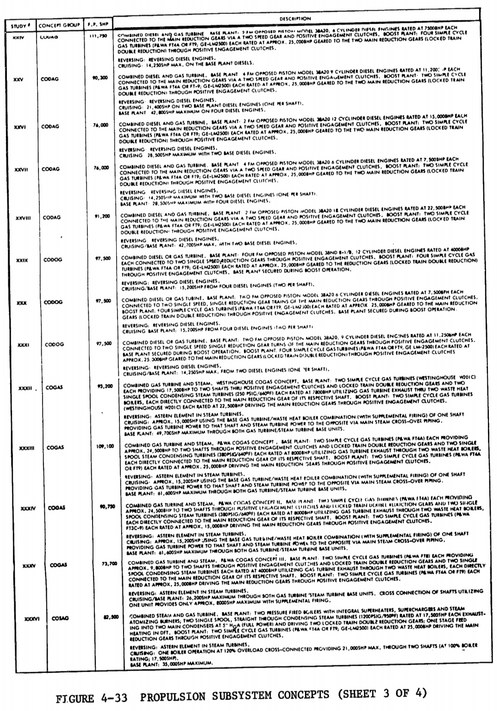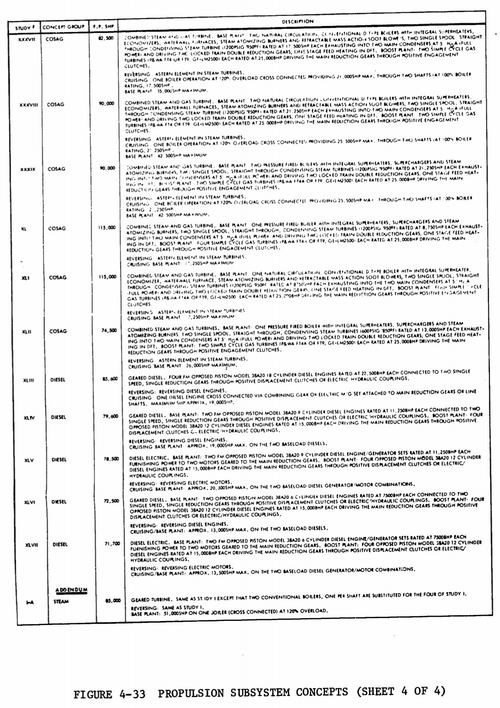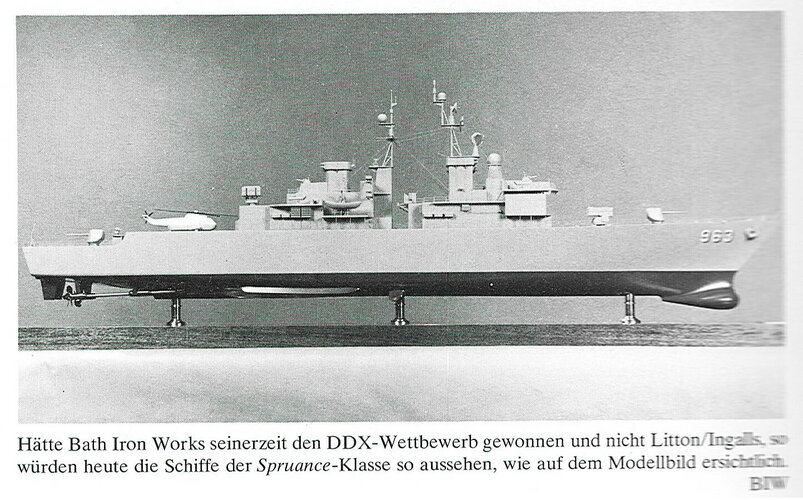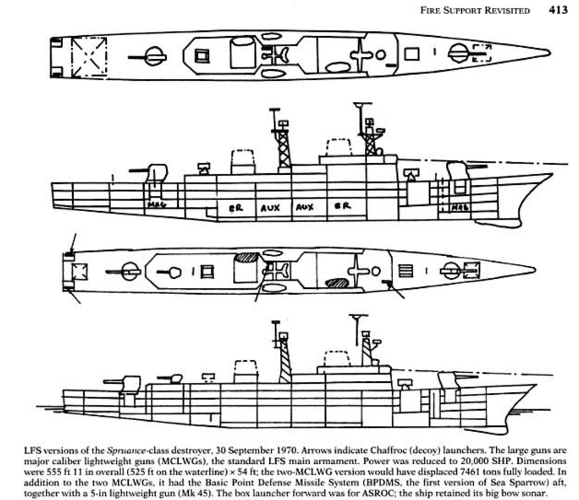From Layman and McLaughlin's
The Hybrid Warship: The Amalgamation of Big Guns and Aircraft:
The air defence and ASW potential of VTOL aircraft has led to the consideration of a new type of vessel, the 'air-capable' warship. There are links between the modern air-capable ship and the flying-deck cruiser of the 1930s, both in form and intended functions; another interesting reflection of the 1930s is the fact that the air-capable ship has come at one point to the attention of the US Congress.
In the Fiscal Year 1978 shipbuilding programme, Congress approved the construction of a single air-capable
Spruance (DD963) class destroyer. This would have involved simply increasing the size of the hangar and flight deck, allowing the ship to operate up to four helicopters, or, ultimately, some form of VTOL aircraft.
The US Navy did not really want this ship, and in the end managed to get the funds redirected to a standard unit of the class. However, the basic idea has inspired several other projects.
One of the earliest of these designs to appear was the work of Dean A Rains and Donald B Adams, both of Ingalls Shipbuilding Division, for a 'flight deck DD 963'. This proposal resembled Croker's 'through-deck cruiser', and called for a complete revision of the
Spruance design. The beam would be increased from 55ft to 68ft, the superstructure would be rearranged and a hangar built on the main deck; there would be a flight deck forward of the hangar, including a ski-jump in some versions of the design, and a landing deck abaft it. In no meaningful sense a hybrid, this was really an attempt at a small carrier.
Another
Spruance conversion design was worked out by the Grumman/Santa Fe Corporation and bears a strong resemblance to traditional hybrids. This scheme is one of several proposed 'mid-life' modernisations of the
Spruance class ships. It shows the basic destroyer design from the bow to the after superstructure, but aft a large hangar has been built onto the hull, with a flight deck above. The resulting 9000 ton ship could embark as many as eight helicopters or four ASW VTOL aircraft; the sketches show an early version of the never-built Grumman turbofan Model 698 aircraft. This gull-winged aircraft featured swivelling engine nacelles attached to the fuselage and was intended to travel at up to 500 knots.
Still another Spruance-based VTOL design bore a strong resemblance to HMS
Invincible and was intended to provide the advantages of STOL operations. Proposed by Commander Ronald J Ghiradella, US Naval Reserve, it featured a basic
Spruance hull lengthened to 606ft overall; the gas turbine uptakes are trunked to starboard where an island superstructure is located, making room for a 470ft flight deck angling to port. Forward, there are conventional weapons: a 5in gun and Harpoon anti-ship missile canisters, with 30mm guns sited on each quarter to provide close-in AA defence, and a Basic Point Defense Missile System is located aft of the island. There is a long, narrow lift (62ft by 26ft) aft of the island. Ghiradella foresees two hangar decks, the main one on the original main deck, with a lower hangar deck extending from the lift aft to the stern. In spite of the fact that the lift is too narrow to handle Harriers, Ghiradella gives the aircraft complement as twelve 'medium-sized' helicopters and four 'Harrier-type' aircraft.
Source:
http://www.shipbucket.com/forums/viewtopic.php?f=17&t=2171

